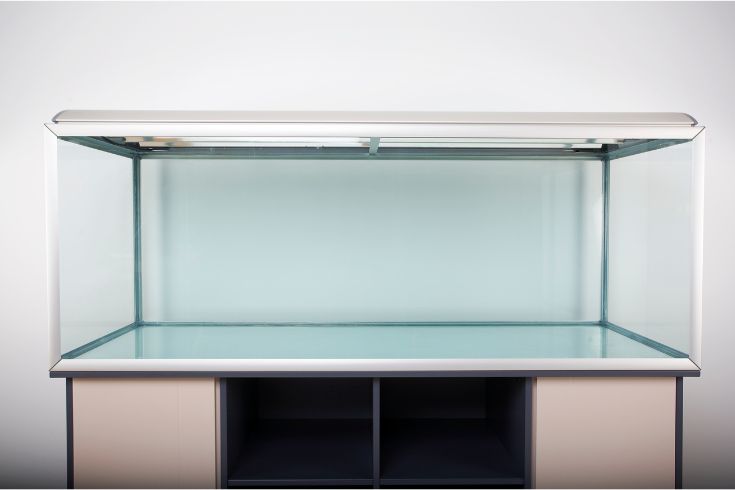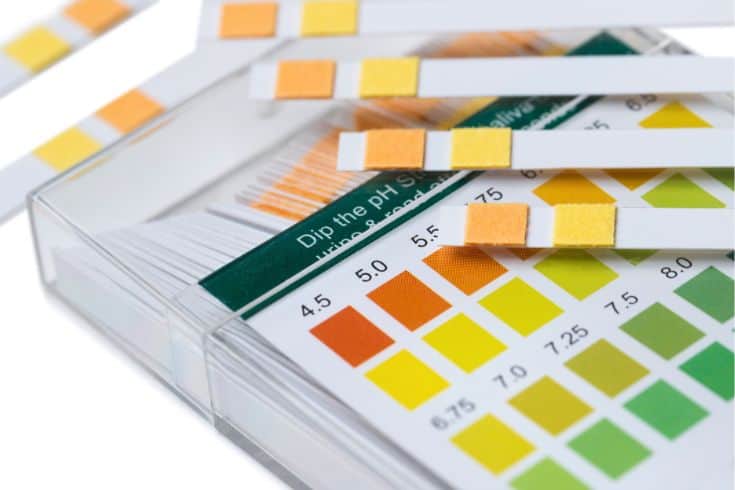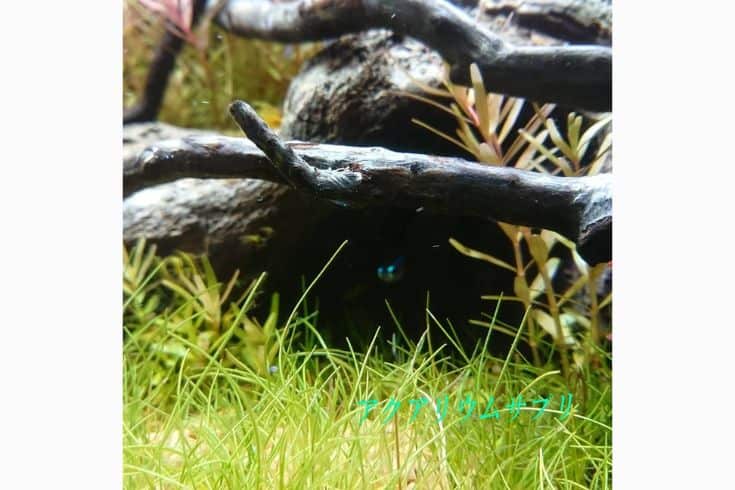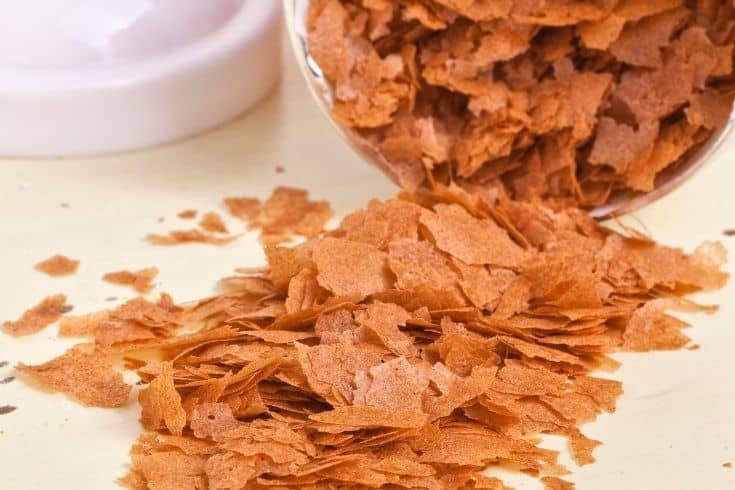Rainbow fish and guppies have many things in common. For one, they both come in a variety of colors, making them fantastic additions to any freshwater tank. For another, they’re both tropical freshwater fish that favor warm, idyllic waters. These similarities make it a reasonable assumption that they might be able to coexist in the same tank. But should you try it?
This article explores whether or not you can keep rainbow fish and guppies together in the same aquarium. We’ll discuss their differences and similarities and some potential risks associated with housing them in the same tank. Then, we’ll talk about how you can set your tank up for success by preparing the environment to meet their unique needs.
Are Rainbow Fish and Guppies Compatible?
Before delving into the factors that affect whether rainbow fish and guppies can live together, it’s important to understand the differences between these two species.
- Rainbow fish come from a family of freshwater fish native to Australia and New Guinea. They have long, slender bodies with scales in a variety of iridescent colors. Rainbow fish prefer slow-moving streams and rivers, where they can thrive in warm waters.
- Guppies are a type of livebearing fish. Unlike rainbow fish, they are not native to Australia and New Guinea, but rather originate from the highlands of Central and South America. These hardy fish have short, rounded bodies with bright colors, and they also have a penchant for warm water.
Generally speaking, both types of fish are easy-going and peaceful, so it’s possible for them to live together in the same aquarium. However, there are a few factors to take into account before deciding if it’s right for your tank.
Size Differences
The most important factor to consider when deciding whether or not rainbow fish and guppies can live together is size. Conventional wisdom dictates that you should never keep aquarium fish of vastly different sizes in the same tank, as there is a risk of predation. The larger fish may attempt to eat the smaller ones, leading to stress and illness for both species.

In this case, guppies are much smaller than rainbow fish, with adults typically reaching a maximum size of only around 2 inches (5 cm). Rainbow fish, on the other hand, can grow up to 6 inches (15 cm). Naturally, this size difference can pose a problem for guppies if not managed properly, which is where species selection comes into play.
Rainbow fish come in a range of sizes, with some species remaining relatively small and others growing much larger. The forktail rainbow fish, for instance, grows up to only 2 inches, while the Madagascan rainbow fish can approach 6 inches in length. If you intend to keep rainbow fish and guppies together, opt for the smaller varieties to reduce the size difference.
Tank Volume
Another important factor to consider when deciding if rainbow fish and guppies can live together is tank volume. Being a small species, guppies are generally happy in a 10-gallon fish tank. This is often touted as the minimum tank size for guppies, as it can comfortably accommodate a tiny school of five – enough to provide a sense of security for your tiny fish.
When considering tank volume for rainbow fish, however, the recommended size is much larger. Both guppies and rainbow fish require schools for safety and security, so a 10-gallon tank may not be large enough to accommodate both species. You’ll need at least 20 gallons or more, as the larger tank size will give them more room to roam.
A good rule of thumb is to allocate approximately 1 gallon of water for every inch of fish in the tank. Use the maximum measurements of each species, as this allows you to account for potential growth. For instance, you could assume that each guppy will measure 2 inches in length, regardless of what stage of growth they are at.

Temperament and Personality
Though generalizations can be made, each fish has its own unique temperament and personality. Therefore, it’s important to consider the individual temperaments of your rainbow fish and guppies before placing them in the same tank. Some rainbow fish may be more aggressive than others, while some guppies may be more timid or bold.
Whenever possible, it’s best to introduce all species into the tank at the same time to ensure that they form a cohesive school. If this isn’t possible, then observe the fish carefully for signs of stress or aggression. If there is any hint that something is awry, remove the offending fish from the rest of the school, and move them to another tank.
Some common signs of aggression in fish include chasing, nipping fins, and chasing other fish away from food. In the worst cases, aggressive behavior can cause fin damage and even death. Keeping an eye on these behaviors will ensure that your aquarium remains peaceful and stress-free. Your fish will thank you for it!
Tips on Keeping Rainbow Fish and Guppies Together
Assuming that you’ve taken all of the above factors into account, you may now be ready to attempt to keep rainbow fish and guppies together. Here are a few tips to help ensure the success of your tank:
Maintain Ideal Water Parameters
The best part about keeping rainbow fish and guppies together is that they share similar water requirements. Both species thrive in warm waters between 72°F and 82°F, with a neutral pH and moderate hardness. Given that they have such similar requirements, you won’t have to worry about adjusting your aquarium water for one species over the other.

Not only do you need to make sure every water parameter stays within these ranges, you’ll also need to make sure every parameter is stable. For instance, if you’ve decided to keep your tank at a comfy 78°F, it’s important to maintain that temperature. Fluctuations in water parameters can cause a great deal of stress for your fish, so make sure to monitor them carefully.
Many aquarists turn to tools such as thermometers and test strips to make sure their aquarium water remains consistent. Though it may be tempting to skip out on these tools, they can help you maintain a healthy aquarium for your fish. Heaters malfunction, and water sources can change over time, so you should always monitor these factors to keep your fish healthy.
Make Sure Every Fish Gets Enough To Eat
Another important factor to consider when keeping rainbow fish and guppies together is making sure that every fish gets enough to eat. The good news is that both species are omnivores that enjoy a variety of food. You can feed them commercially produced fish food, and supplement their diet with live protein sources such as bloodworms and daphnia.
Getting their diets right is only half the battle. The other half is making sure that every fish gets enough to eat. Guppies can be skittish, so they may struggle to compete with larger rainbow fish. If any of your guppies are looking underfed, try feeding them separately in a different tank. You can also provide floating foods that are easier for timid fish to access.
Another strategy is to feed your fish at opposite ends of the tank. Even the most aggressive fish can’t be feeding from two places at once, so you can use this to your advantage. This way, all of your fish will get their fair share of food–it might just take a bit more planning and effort on your part. As long as your fish get the nutrition they need, that’s all that matters.
Pick Your Tank Mates Wisely
Earlier, we touched on the importance of choosing smaller rainbow fish species. These smaller species are generally more peaceful, and they are less likely to cause issues in the tank. However, the species of fish you choose for the rest of your tank matters just as much. Both rainbow fish and guppies are peace-loving fishes that need to be kept with other peaceful fish.
It’s important to avoid species that are known as fin-nippers or bullies, such as tiger barbs. These fish can cause irreparable fin damage to both rainbow fish and guppies, so they should be avoided at all costs. Predator fishes such as angelfish are also not a good idea, as they may view your guppies and rainbow fish as potential meals.
On the other hand, schooling fish such as tetras and danios can be fantastic tank mates for your guppies and rainbow fish. These species typically stick to themselves, which is essential for maintaining a sense of harmony with community fishes. As an additional perk, the sight of groups of fish swimming in unison can be very calming.
Perform Regular Water Changes
Though both rainbow fish and guppies are quite hardy, it’s important to perform regular water changes with any kind of aquarium. This helps to keep your tank water clean and free of harmful toxins. We recommend a 25% water change on a weekly basis, though you can adjust this schedule depending on your tank’s bio-load.
Two of the most important water quality indicators you should check during water changes are ammonia and nitrite levels. If either of these increase, you can perform more frequent water changes to keep your fish safe. You should also make sure the pH in your tank remains stable, as sudden shifts can cause a great deal of stress for your fish.
Frequent water changes, coupled with a reliable filtration system, will go a long way in keeping your fish healthy and happy. If you ask us, water quality is by far the most crucial determinant of whether or not your guppies and rainbow fish will thrive in the same habitat. Clean water equals healthy fish that get along with one another and live long, happy lives.
Provide Hiding Places for Your Fish
Finally, it’s essential to provide your rainbow fish and guppies with plenty of places to hide. Both species are timid, and they may become stressed if they don’t have enough secure hiding spots in their tank. These hides can take the form of rocks, plants, or even driftwood pieces. Live plants are especially beneficial, as they can help reduce the stress levels of your fish.
Some aquarists even use artificial ornaments to create caves and shelters, which can serve as great hiding places. Though these decorations don’t have the same filtration benefits as live plants, they can still provide a sense of security for your fish. Opt for materials that are safe for aquaria, such as resin or PVC pipes, and be sure to sand any rough edges down.

Whether you opt for artificial caves or hiding spots made up of natural materials, safety should always come first. Make sure you don’t overcrowd the tank, and mix things up by providing a variety of hiding places. And if you opt for driftwood or rocks, make sure they don’t alter the pH, hardness or chemistry of your tank water. Use a test kit to make sure things are in check!
FAQs
How Big Of A Tank Should I Use?
Excellent question! Assuming you’ve taken our advice and stuck to the smaller rainbow fish species, a tank size of 20-30 gallons is usually ideal. This will suffice for a small group of 5-6 guppies and 2-3 rainbow fish.
Remember to account for any tank accessories you may need, such as decorations, live plants and a filter. These take up space, and can affect your stocking levels. Err on the side of under-stocking your tank. A few spare gallons of water can help give your fish plenty of room to move around and explore.
Can You Feed Rainbow Fish and Guppies With The Same Foods?
Yes, Rainbow fish and guppies can both eat a variety of foods. In the wild, they typically feed on insects and small crustaceans. In the aquarium, they can be offered a wide range of quality prepared foods such as flakes, pellets and frozen treats.

It’s important to provide a good mix of animal-based protein and plant matter to ensure your fish get a balanced diet. Supplement their meals with live foods such as brine shrimp and daphnia for an added protein boost. As for plant-based foods, try offering blanched vegetables such as cucumber, spinach and zucchini.
Finding the right balance of food will depend on the size and age of your fish. Talk to your fish store for tailored advice, or consult a qualified veterinarian if you need further help.
Can Guppy Fry Be Kept With Rainbow Fish?
No, we do not recommend keeping guppy fry with rainbow fish. Even if the larger adult rainbow fish don’t eat them, they can still cause a great deal of stress for the fry. Fortunately, guppy fry are quite resilient and can easily be moved to a separate nursery aquarium until they’re large enough to be re-introduced with the adults.
Be sure to keep the nursery tank clean, feed the fry in small amounts several times a day, and perform regular water changes. Doing so will help ensure your guppy fry survive and thrive in their new home!
The Takeaway
Rainbow fish and guppies can live together quite happily, provided their needs are met. Give them a spacious tank with plenty of hiding spots, feed them a varied diet, and keep an eye out for any signs of stress or aggression. With the right setup and care, you can enjoy watching your fish swim and explore together in harmony. Good luck, and happy fishkeeping!
